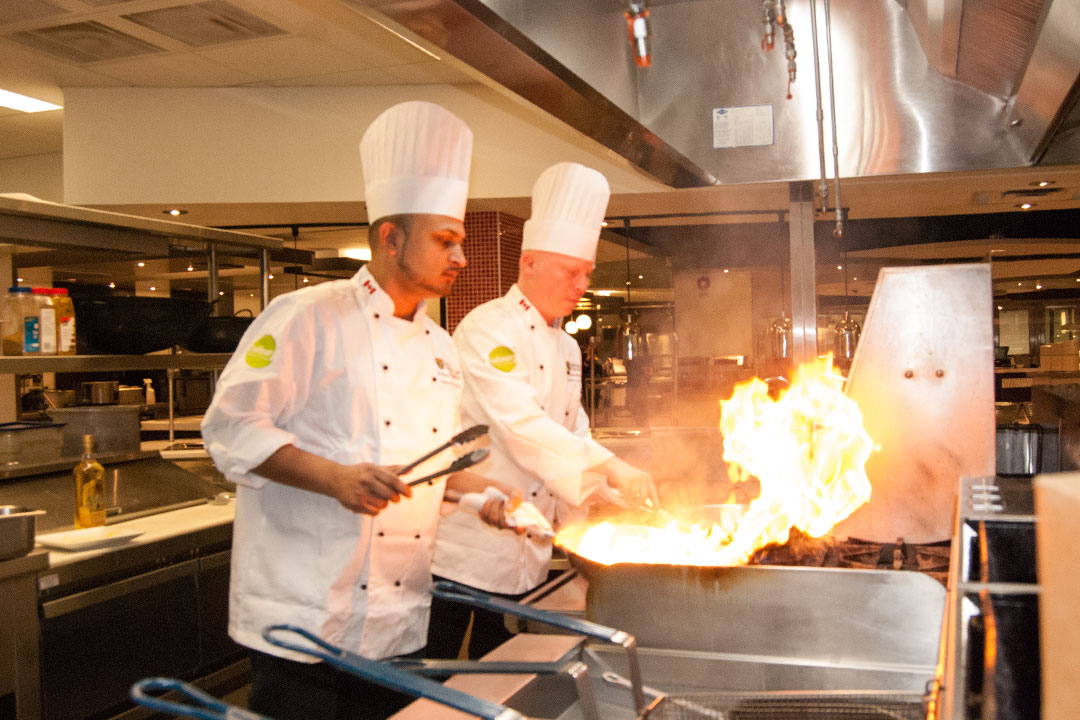
Student Iron Chef competition fires up the grill
When you’re feeding a crowd of 600 people, sometimes there’s no such thing as too many cooks.
By HenryTye GlazebrookAt least that’s what a pair of students learned last year during the University of Saskatchewan Student Iron Chef competition. After entering the contest with plans for a mass supply of three varieties of Chinese dumplings, the duo quickly discovered they needed all hands on deck if they wanted to finish their complex preparations in time.
“They ended up bringing some of their friends along, probably about 10 of them,” said James McFarland, assistant director and executive chef for U of S Culinary Services, chuckling. “There was a small army of them in the kitchen the night before, I think because they realized they might have overcommitted a bit.”
McFarland is part of the team that plans and oversees the Student Iron Chef competition, which has become an annual tradition on campus since it was first introduced in 2014. The event, scheduled for March 22 this year, encourages student involvement and highlights the university’s culinary profile.
“We’re trying to show people that our culinary services aren’t just your stereotypical lunch ladies in hairnets,” said Kylie Slade, marketing co-ordinator with Consumer Services, adding that McFarland has worked in the food industry his entire career and recently entered in a Gold Medal Plates competition. “The way that we prepare food isn’t how people are familiar with it having been years ago.”
“Campus dining in general has really taken off in a different direction,” McFarland added.
Student Iron Chef has about 10 teams of up to four core members— with allowances for assistance based on necessity—pouring into the Marquis Hall kitchen and whipping together their signature dishes for a crowd numbering in the hundreds. To help ease the pressure of cooking for such a large crowd, the university kitchen staff helps with prep work.
The result is a kitchen teeming with rookies and skilled experts alike, chopping, frying, grilling, dicing and generally contributing to a lively cooking experience.
“This ends up being something for our staff, too,” McFarland said. “They really get excited. It’s a busy kitchen. It goes from a normal crew of six to eight people in that kitchen to suddenly having around 50.”
Not every entrant takes on the herculean task of producing enough dumplings to feed hundreds of hungry mouths. Instead, dishes range greatly and have included recipes such as family spaghetti and cedar plank salmon. The variety leads to a contest that’s as thrilling to judge as it is to take part in.
“It all comes back to flavours and to how things work on the plate, complementing each other through taste and visual presentation—the subtle complexities,” McFarland said.
Each dish is considered by a panel of five judges, including one guest chosen at random from the audience, and are marked based on taste, originality, complexity, kitchen sanitation and plating. And while each area is equally important, some teams go above and beyond a traditional restaurant-style presentation when they bring their dish to the judges.
“The students got really creative in their presentation,” McFarland said. “The first year, we got fancy little menu printouts. Last year we had students serve their item on dry ice. I think they were really trying to craft a story about their dish.
“The rest of it can lead into points, but from a professional standpoint of judging, we’re really looking more for how a dish is plated as well as the effort, complexity and skills behind it—not that we want to discourage that other stuff, since it really makes things more fun.”
Entrants in the competition range greatly, with everyone from food hobbyists to part-time line cooks, doctors-in-training and even university administration taking part.

